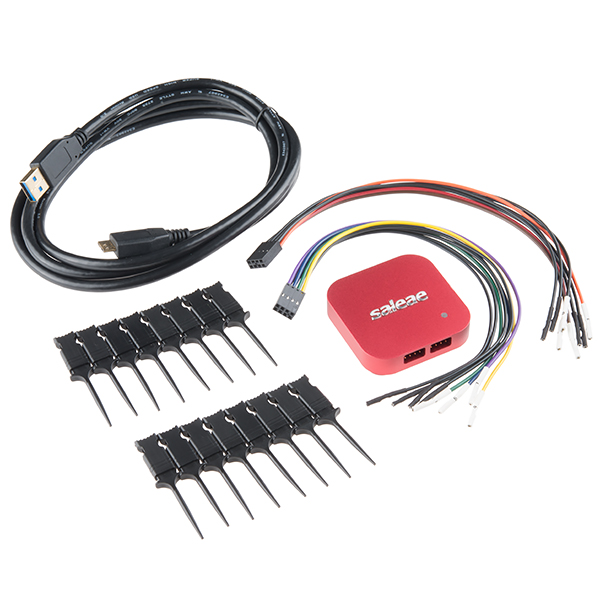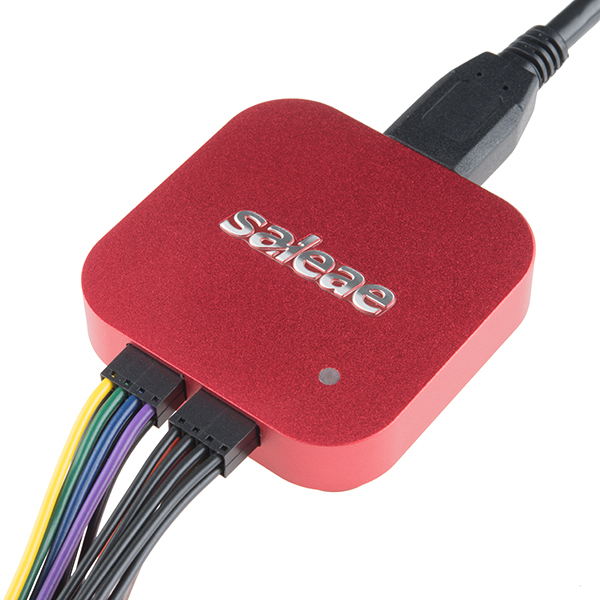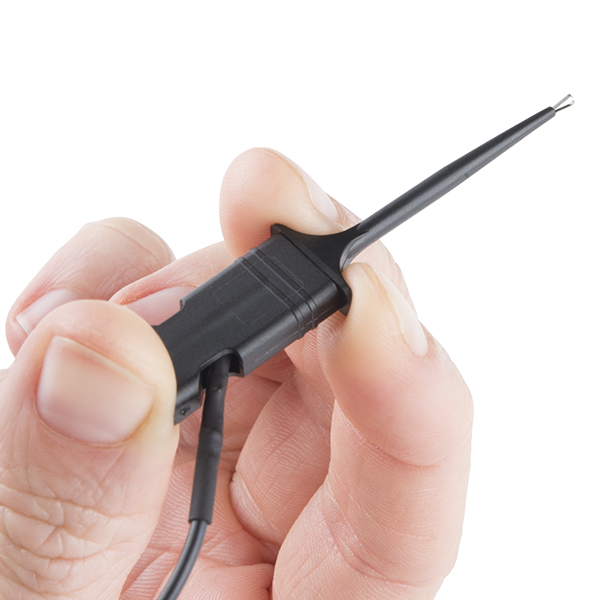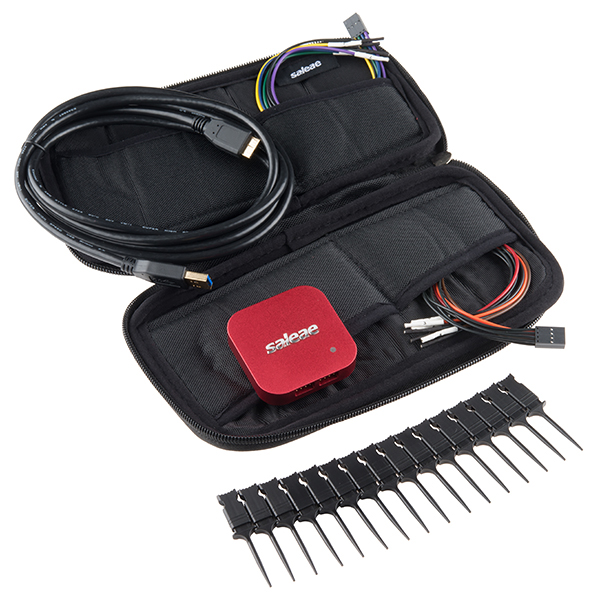Logic Pro 8 - USB Logic Analyzer
Do you need big logic analysis in a small package? That's exactly what the Logic Pro 8 brings you. The Logic Pro 8 is a 8-channel USB logic analyzer with so much style it'll make your cell phone jealous. Simply connect it to your computer with the included USB 3.0 cable, attach your test probes and install the Saleae Logic software and you'll be debugging in no time. Along with adding 4 more channels of signal capture, the Logic Pro 8 differs from the Logic 4 by increasing the max sample rate, and adding support for 1.8V logic levels.
The Logic Pro 8 has a rugged, custom-machined aluminum enclosure and can be carried in the included zip-up carrying case (which is small enough to toss in your laptop bag). This is a great field diagnostic tool as well as a welcome addition to any workbench.
- 1x Logic Pro 8
- 1x USB A to USB 3.0 Cable
- 2x Ultra-Flexible Test Lead Set
- 16x Micro Hook Clips
- 1x Custom Carrying Case
- Eight Multi-Use Inputs - Analog/Digital/Both
- Digital Sample Rate: 500 MS/s (Max)
- Analog Sample Rate: 50 MS/s (Max)
- Fastest Digital Signal: 25 MHz
- Supported Logic Levels (Digital): 1.2V-5.5V
- Input Voltage Range (Analog): 0V-5V
- Bandwidth (Analog): 1MHz
- Number of bits (Analog): 10 bits
- Works with RS-232, 422/3 Directly
- USB 3.0
- 2.1" x 2.1" x .46" ( 53 x 53 x 12 mm )
Logic Pro 8 - USB Logic Analyzer Product Help and Resources
microSD Sniffer Hookup Guide
August 4, 2015
A basic introduction to working with the microSD Sniffer.
Core Skill: Electrical Prototyping
If it requires power, you need to know how much, what all the pins do, and how to hook it up. You may need to reference datasheets, schematics, and know the ins and outs of electronics.
Skill Level: Experienced - You will need to consult a datasheet for calculations to determine a components output format, linearity, and do a little math to get what you need. You will be using a datasheet or schematic beyond basic pinouts.
See all skill levels
Comments
Looking for answers to technical questions?
We welcome your comments and suggestions below. However, if you are looking for solutions to technical questions please see our Technical Assistance page.
Customer Reviews
4 out of 5
Based on 2 ratings:
2 of 2 found this helpful:
Sweet product
I really like this pocket-sized tool. Very easy to use, and it allows displaying digital as well as analog signals. The only trouble I have from time to time is that the USB connection breaks down. Then Saleae's software tells me to unplug and re-connect the analyzer. It also proposes to reduce the bandwidth. The software needs to be closed and started again as well, which is kind of annoying. However, I have not understood why USB sometimes breaks down. There are times when it works fine for hours. If you want to use the high bandwidth, you definitely need a USB 3.0 connection.
3 of 3 found this helpful:
Great desktop logic analyzer!
An easy to use interface and slick industrial design make this a great piece of hardware to own for desktop probing. I find oscilloscopes to be a bit cumbersome and time consuming to setup. Saleae fills the niche. The price tag may cause some consumers to balk however..






I think you should consider stocking the Logic 8, not just the 4 and the Pro 8. The Logic 8 hits the sweet spot of being very powerful and still within reach for most hobbyists. The Pro is obviously better, but also costs twice as much, and it's not really the stuff most hobbyists need.
I got the Logic 8 recently and love it. Amazing product.
Something important to know about this (and other Saleae products) is that they fully support Linux 32 and 64 bit, as well as OSX.
Obviously a big plus for those of us who use a REAL operating system. :)
I have an old Saleae 16 and run the Saleae Logic application. The program runs fine on my MacBook Pro.
You really need to use a mouse when using the Saleae Logic application, the mouse wheel is used to zoom in/out.
I think that this Pro 8 model has a higher sample rate than listed. Digital - 500 MS/s, Analog 50MS/s.
Sorry about that, everything should be up to date.
Agreed, the Saleae website lists the Logic Pro 8 as having a digital sample rate of 500 MS/s and analog sample rate of 50 MS/s.
https://www.saleae.com/?gclid=CjwKEAiAzIWkBRDO5LDEn8G1nAUSJADnHq_5x4NhxIrEZoAVKlEKLHqDYwl24WqMRIjlsFQX0902fhoCLTnw_wcB
Hi all, I can't find the Logic 8 (about $249) here. Only the smaller Logic 4 ($109) and the more expensive Logic Pro 8 ($479). Is there a reason it's not sold here? Or please provide the link to it. Thanks! Gil.
The name say that this is Pro, the price likewise, but the specifications are for the Logic 8, which is this? specifically, the pro goes from 1.2v, not 1.8v, speeds are different etc.
It is a Pro, looks like our editing system didn't save a few things. All fixed now though!
I have the logic 8 (not Pro) from Saleae, it's a great product, awesome function with the software. For the pro, I think the fastest digital signal should be 100 MHz, not 25 MHz.